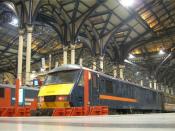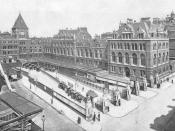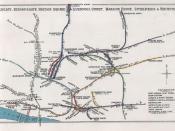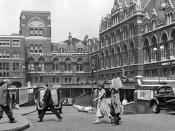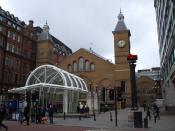Broad Street station.
The medieval building was destroyed in 1829 so that a new street could be built between Bishopsgate and Bloomfield Street. Liverpool Street and Eldon Street connected Bishopsgate with recently built houses for the professional classes in Finsbury Circus. The decision to site two new railway stations to the north of Liverpool Street forced a solution. From matters of segregation within stations to people losing their homes and business the lower classes were losing out every time.
Broad Street had been a milestone in station design. Broad Street station was described as lombardic, free Italiante or Italian gothic in style. The best white Suffolk bricks were contrasted with red blue and white Staffordshire bricks.
Liverpool Street Station.
Whilst Broad Street Station was being built Great Eastern Railway were busy plotting their response. Great Eastern Railway was financially in disarray, a factor that ultimately delayed the completion of Liverpool Street Station. The second Plan was a site at the corner of Wormwood Street with Bishopsgate. The site at Liverpool Street was eventually decided upon. This location enabled Liverpool Street Station to use the same approach tracks as the old Bishopsgate Station.
Financial issues always hampered the progress of the station. The Building News described it as "ÃÂthis latest attempt to make railway stations architectural. Overall the station was well met by the press. The design of the station came under fire from Lord Claud Hamilton.

